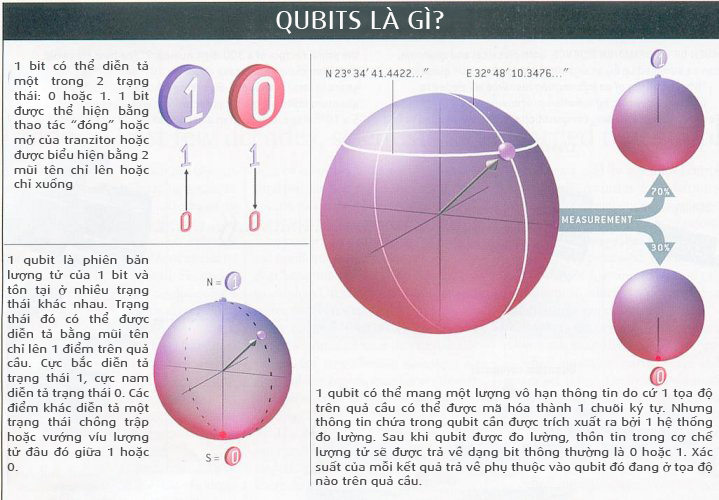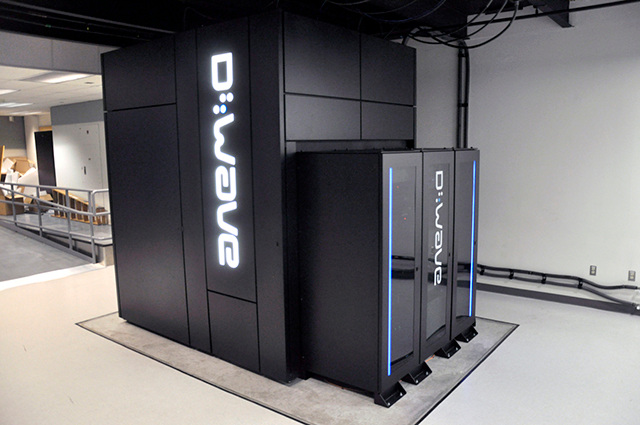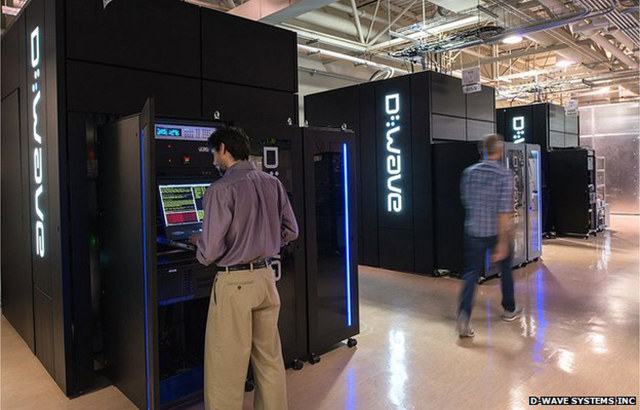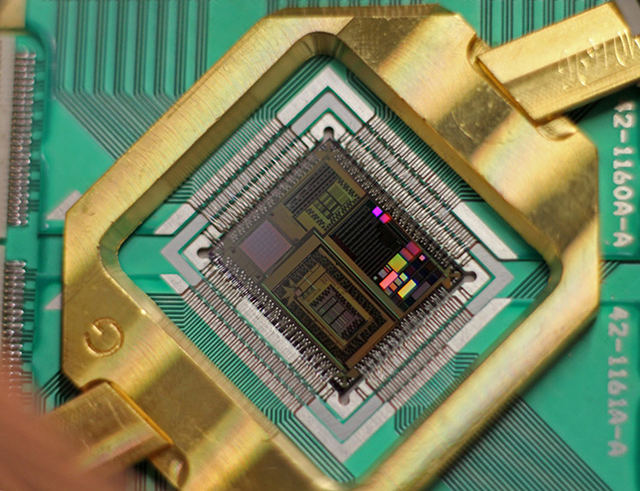What is quantum computing and how did people develop this technology?
Quantum computers promise to create a revolution in the digital world. However, how will humans harness energy from quantum mechanics? It is also a question not only for you but also a concern for researchers and computer manufacturers. The real thing is, what is quantum computer and how far has this technology developed? This article will share with you some information to answer the above questions.
- 3 super computers create eclipse eclipses that help you preview the total eclipse tonight
- The fastest supercomputers in the world
What is quantum computing?
Quantum object systems can exist in many different states at the same time and are called overlapping states of overlap . The idea of quantum computing was first proposed in 1980 by the Russian-German mathematician Yuri Manin using quantum entanglement and entanglement effects to perform calculations on input data. .
Unlike transistor computers based on transistors, it is necessary to encode data into binary digits, each assigned to 1 of 2 certain states of 0 or 1, quantum computing using bits Quantum is in a superposition state to calculate. This means that 1 quantum bit (the basic unit of information in computing, abbreviated as qubit) can have values of 0 and 1 at the same time.

The evaluation of the value of qubits is demonstrated by the coin experiment of David Deutsch and Richard Jozsa, two pioneers in the field of quantum computing. Normally, to see the two sides of a coin we have to turn it over. So it takes two steps. Meanwhile, Deutsch and Jozsa used quantum computation to simultaneously see both sides of a coin (fiction) after it was launched. A qubit will be an average combination of face and face.
Theoretically, a computer with multiple qubits is capable of handling a tremendous amount of tasks such as calculating arithmetic or performing searches in extremely large databases in much faster time than machines. common sense. A quantum computer can also solve the complex problems that supercomputers today take millions of years to find out.
Even a quantum computer is able to solve complex problems faster than classical computers using today's best algorithms, typically Shor algorithms to analyze natural numbers into integers. or Simon algorithm.
Has anyone made a quantum computer yet?

In fact, many laboratories around the world have created devices capable of performing quantum calculations on a small number of qubits. However, even researchers have spent a long time and still have not created powerful devices that are comparable to pocket computers. The most impressive success is analyzing number 21 into 2 factors of 7 and 3.
And then in 2007, D-Wave in Canada announced the first commercially capable quantum computer named D-Wave One . As described from D-Wave, this is a quantum computer that uses the "quantum tempering practice" process with a system of 128 qubits. These qubit numbers are divided into 16 compartments, each of 8 qbits and created by superconducting rings.
Next, D-Wave released the second version of the quantum computer called D-Wave 2 . It was a 3-meter-tall black box, the inside contained a niobium computer chip cooled at -273 degrees Celsius. In theory, D-Wave could solve the problems that supercomputers must take Only a few centuries have it been done in many fields, from cryptography to nanotechnology, from pharmaceuticals to artificial intelligence.
D-Wave has very few customers due to the risk of the project and the price is too expensive: from 10 to 15 million dollars. Mainly only government, defense, . organizations to conduct experiments and theoretical research. According to the report, Google recently joined NASA to conduct research on quantum computing using a D-Wave machine.
So how is D-Wave used?
D-Wave describes it as a quantum machine that can perform calculations. However, researchers around the world have yet to find a way to apply the D-Wave machine to research practice. Scientist Matthias Troyer at the Zurich Institute of Technology and Science, Switzerland, said: " Nobody knows D-Wave is really a quantum computer? This is really a risky and more theoretical project. If someone gives a clear proof, it is a great breakthrough. "
Since earlier this year, Troyer led a research team to test the D-Wave 2 machine at Google technology group. And the disappointing end result is that there is no quantum acceleration going on inside D-Wave 2. Besides, no one can use D-Wave to perform specific calculations such as classic computer. To do this, it is necessary to develop a special quantum algorithm with a completely different structure than that of conventional computer software. In addition, tests have yet to prove the superiority of quantum acceleration compared to conventional computers.
Therefore, until now, this machine only serves research work to continue developing theory rather than being used practically. No one knows how quantum acceleration theory will be translated into real-world actions. Currently, both empirical and theoretical research have been implemented by organizations that possess quantum computers.
How did researchers verify the D-Wave computer?

Tests are based on the advantages of quantum computers compared to conventional computers. Typically, the problem of low altitude analysis of hilly landscape. According to the analysis of the computer will usually check the entire mountain, then compare and choose the lowest mountain. This process will take a long time. Meanwhile, quantum computers choose their own way as "creating a tunnel" to find the lowest mountain and of course, the process is extremely fast.
However, the problem here is that the tests are not difficult enough to compare the superiority of quantum computers to conventional computers. This has created a suspicion that either D-Wave is not qualified to become a quantum computer, or humans have not yet created tests to "force" D-Wave to operate at full capacity.
Vadim Smelyanskiy, a scientist at NASA's Quantum Intelligence and Artificial Intelligence Laboratory, said: " The D-Wave engine is still just using traditional resources instead of applying quantum mechanics to doing it. "So far, NASA has partnered with Google to conduct research right on the D-Wave engine. D-Wave's side stated that the tests offered are still too easy for their machine and that a test of sufficient difficulty is needed to prove its power.
So is there any solution for the controversy?

Until now, Smelyanskiy has been a researcher for a collaborative quantum computing research project jointly implemented by NASA and Google. Smelyanskiy said that the project has yet to achieve breakthrough achievements and still needs at least 15 to 25 years to prove the machine is "quantum". He shared that the comparison is similar to finding the mechanical difference made by Charles Babbage in the 19th century compared to today's powerful computers.
Simply put, try to use something that requires tremendous processing power and perform on both machines to determine their abilities. At the moment, D-Wave is still a machine that we don't know yet. If clarifying this issue will create a very impressive result. This can be seen as a revolution that changed the digital civilization of mankind.
So when will we be able to own quantum computers to serve individual needs?
Smelyanskiy replied to this question: "No matter how future the quantum computer will change, don't expect to own your own product. This will be a specialized device. In order to solve the most complex and important problems of humanity rather than doing things like traditional computers, laptops or iPhones, quantum computers are not things on the desk at every family. Future."
According to Exquisite
You should read it
- Quantum computing - the future of humanity
- Join Microsoft's free Quantum computing course today
- Even Bill Gates doesn't understand the algorithm behind quantum computing
- Quantum computing will become Amazon's key business service
- The difference between quantum computers and supercomputers
- Google achieves new achievements in quantum computing with the 53-qubit Sycamore chip
 Incidentally: Used toilet paper can be recycled into electricity
Incidentally: Used toilet paper can be recycled into electricity Primer - Super transform robot like Transformer
Primer - Super transform robot like Transformer Smart lights made of paper can change color and brightness
Smart lights made of paper can change color and brightness CO2 emissions will be used as fuel for cars in the future
CO2 emissions will be used as fuel for cars in the future Unmanned aircraft help predict volcanic eruptions
Unmanned aircraft help predict volcanic eruptions Plastic roads are capable of ... self-filling potholes in the Netherlands
Plastic roads are capable of ... self-filling potholes in the Netherlands